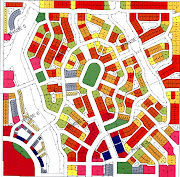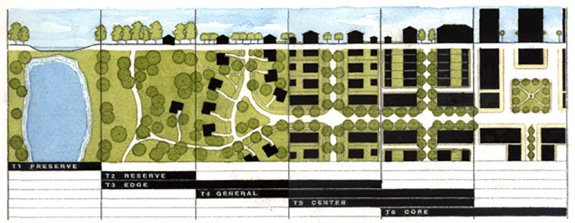To refresh this blog, click here: NewHerbanism.blogspot.com
Leytham is not a conventional subdivision. It is not a development as we have come to know that term. It is much more than just a real estate project. It is a new neighborhood where people will work, learn, play, shop and, of course, live. Since Leytham embodies so many of the aspects of life, the idea of Leytham can best be summed up as "Leytham Life."
Click below for the next Leytham Life marketing tag line.
Leytham Life Slogan Generator
Once at the Slogan Generator, you can click on "Generate My Slogan" over and over again to get new tag lines. If you like one of them, let me know.
Herb
Sunday, September 23, 2007
Thursday, September 20, 2007
"Things are bad and they're getting worse"
To refresh this blog, click here: www.NewHerbanism.blogspot.com
What cost $78.2 Billion Dollars (in 2005), took 4.2 Billion Hours and wasted 2.9 Billion Gallons of gasoline?
Traffic congestion, that's what . . . according to the Texas Traffic Institute’s "2007 Urban Mobility Report" released this week.
"Things are bad and they're getting worse," says Alan Pisarski, a transportation expert and the author of "Commuting in America."
On the way to finding one of those 11 parking stalls per family (see last week's posting here), average driver in 437 U.S. urban areas (and all of his/her passengers) spent 38 hours locked up in traffic congestion. This wasted 26 gallons of gasoline, and cost $710. By comparison, in 1982 the average annual delay was 14 hours, consumed 9 gallons of gasoline and cot $260 (in constant 2005 dollars.)
Here's a list of cities where the institute found the worst traffic jams, along with the number of hours in a year drivers spent stuck behind the wheel:
Large Cities
Los Angles-Long Beach-Santa Ana, 72 hours
San Francisco-Oakland, 60
Washington, DC-VA-MD, 60
Dallas-Fort Worth-Arlington, 58
Houston, 56
Detroit, 54
Miami, 50
Phoenix, 48
Chicago, 46
New York-Newark, NY-NJ-CT, 46
Boston, 46
Seattle, 45
Philadelphia, NJ-DE_MD, 38
Medium Cities
San Diego, 57 hours
San Jose, Calif., 54
Orlando, Fla., 54
Denver-Aurora, Colo., 50
Riverside-San Bernardino, Calif., 49
Tampa-St. Petersburg, Fla., 45
Baltimore, Md., 44
Minneapolis, St. Paul, 43
Indianapolis, Ind, 43
Sacramento, Calif., 41
Las Vegas, 39
San Antonio, Texas., 39
Portland, Ore., 38
Columbus, Ohio, 33
St. Louis, 33
But, what about Omaha? What about our "20 minute city?" According to the study, the average driver in Omaha wasted 25 hours in traffic congestion and in doing so, wasted 15 gallons of fuel. What if you add all that up? In Omaha alone, the study's authors conclude, in 2005 we collectively wasted 8,784,000 hours and 5,344,000 million gallons of gas for a combined "all in cost" of $154,000,000. What was YOUR share?
To check out the study, go here: http://tti.tamu.edu/documents/mobility_report_2007.pdf
So while you are stuck in traffic on your quest for your next parking stall, just think about it for a bit, and consider the benefits of the walkable, mixed use residential neighborhood.
Herb
Source: "2007 Urban Mobility Report," Texas Transportation Institute (09/2007)
What cost $78.2 Billion Dollars (in 2005), took 4.2 Billion Hours and wasted 2.9 Billion Gallons of gasoline?
Traffic congestion, that's what . . . according to the Texas Traffic Institute’s "2007 Urban Mobility Report" released this week.
"Things are bad and they're getting worse," says Alan Pisarski, a transportation expert and the author of "Commuting in America."
On the way to finding one of those 11 parking stalls per family (see last week's posting here), average driver in 437 U.S. urban areas (and all of his/her passengers) spent 38 hours locked up in traffic congestion. This wasted 26 gallons of gasoline, and cost $710. By comparison, in 1982 the average annual delay was 14 hours, consumed 9 gallons of gasoline and cot $260 (in constant 2005 dollars.)
Here's a list of cities where the institute found the worst traffic jams, along with the number of hours in a year drivers spent stuck behind the wheel:
Large Cities
Los Angles-Long Beach-Santa Ana, 72 hours
San Francisco-Oakland, 60
Washington, DC-VA-MD, 60
Dallas-Fort Worth-Arlington, 58
Houston, 56
Detroit, 54
Miami, 50
Phoenix, 48
Chicago, 46
New York-Newark, NY-NJ-CT, 46
Boston, 46
Seattle, 45
Philadelphia, NJ-DE_MD, 38
Medium Cities
San Diego, 57 hours
San Jose, Calif., 54
Orlando, Fla., 54
Denver-Aurora, Colo., 50
Riverside-San Bernardino, Calif., 49
Tampa-St. Petersburg, Fla., 45
Baltimore, Md., 44
Minneapolis, St. Paul, 43
Indianapolis, Ind, 43
Sacramento, Calif., 41
Las Vegas, 39
San Antonio, Texas., 39
Portland, Ore., 38
Columbus, Ohio, 33
St. Louis, 33
But, what about Omaha? What about our "20 minute city?" According to the study, the average driver in Omaha wasted 25 hours in traffic congestion and in doing so, wasted 15 gallons of fuel. What if you add all that up? In Omaha alone, the study's authors conclude, in 2005 we collectively wasted 8,784,000 hours and 5,344,000 million gallons of gas for a combined "all in cost" of $154,000,000. What was YOUR share?
To check out the study, go here: http://tti.tamu.edu/documents/mobility_report_2007.pdf
So while you are stuck in traffic on your quest for your next parking stall, just think about it for a bit, and consider the benefits of the walkable, mixed use residential neighborhood.
Herb
Source: "2007 Urban Mobility Report," Texas Transportation Institute (09/2007)
Thursday, September 13, 2007
Your New Urban Factoid(s) of the Day
To refresh this blog, click here: www.NewHerbanism.blogspot.com
"Do we need this much parking space?"
Purdue University researchers surveyed the total area devoted to parking in a midsize Midwestern county and found that parking spaces outnumbered resident drivers 3-to-1 and outnumbered resident families 11-to-1. The researchers found the total parking area to be larger than 1,000 football fields, or covering more than two square miles.
Source: Purdue University News (09/11/2007)
http://news.uns.purdue.edu/x/2007b/070911PijanowskiParking.html
"Even I was surprised by these numbers," said Bryan Pijanowski, the associate professor of forestry and natural resources who led the study in Purdue's home county of Tippecanoe. "I can't help but wonder: Do we need this much parking space?"
The Purdue University News article goes on to note that large churches and "big-box" retailers . . . often feature parking lots that take up more than twice the area of their buildings . . . .
“Parking lots at big-box stores and mega-churches are rarely filled," Pijanowski said. A different approach to development planning could mitigate the monetary and environmental costs associated with parking areas, he said.
"In many areas of the world, particularly Europe, cities were planned prior to automobiles, and many locations are typically within walking distance," Pijanowski said. "This is just one different way to plan that has certain advantages."
"People can help by first realizing that our land is not unlimited and that we need to use it prudently," Pijanowski said. "They can seek a lifestyle that requires less automobile use.”
Yours for the walkable residential mixed use neighborhood that does not require 11 parking spaces per family,
Herb
"Do we need this much parking space?"
Purdue University researchers surveyed the total area devoted to parking in a midsize Midwestern county and found that parking spaces outnumbered resident drivers 3-to-1 and outnumbered resident families 11-to-1. The researchers found the total parking area to be larger than 1,000 football fields, or covering more than two square miles.
Source: Purdue University News (09/11/2007)
http://news.uns.purdue.edu/x/2007b/070911PijanowskiParking.html
"Even I was surprised by these numbers," said Bryan Pijanowski, the associate professor of forestry and natural resources who led the study in Purdue's home county of Tippecanoe. "I can't help but wonder: Do we need this much parking space?"
The Purdue University News article goes on to note that large churches and "big-box" retailers . . . often feature parking lots that take up more than twice the area of their buildings . . . .
“Parking lots at big-box stores and mega-churches are rarely filled," Pijanowski said. A different approach to development planning could mitigate the monetary and environmental costs associated with parking areas, he said.
"In many areas of the world, particularly Europe, cities were planned prior to automobiles, and many locations are typically within walking distance," Pijanowski said. "This is just one different way to plan that has certain advantages."
"People can help by first realizing that our land is not unlimited and that we need to use it prudently," Pijanowski said. "They can seek a lifestyle that requires less automobile use.”
Yours for the walkable residential mixed use neighborhood that does not require 11 parking spaces per family,
Herb
Subscribe to:
Posts (Atom)


